Posts for June 2012
Friday Donut tip: generate unique, memorable passwords for any website

Passwords and website security breaches seem to be in the news constantly. Yet people still insist that passwords are generally a nuisance, and would rather have simple ones or use the same one for every website.
But that's risky. Having just one of those passwords revealed could potentially allow an attacker to access many of your other online accounts.
One really simple way to ensure you have a unique password is to use the name of the website in the password itself.
Come up with a password (or better yet, a passphrase) that you will remember. For example:
Ilikepineapples
That will be the base for your other passwords. For your Google account, you would use the password:
IlikepineapplesGoog
For your YouTube account you would use:
IlikepineapplesYout
Easy! You can obviously make the passwords as complex as you like, using numbers, symbols and both upper and lowercase letters.
Bonus tip:While browsing through the settings for my Gmail account, I spotted two-step verification. This is an excellent way to secure your Google account using your mobile. Every time you sign in on a new device, Google will call or text you a code which you must enter on the website. You won’t have to do this again for 30 days, unless you select otherwise. This way you’ll also know if anyone is trying to break into your Google account, as you will get an unexpected automated phone call from the big G. |
NB: I would recommend including numbers, symbols and capitals in your password. I didn't here for simplicity.
Previous Friday Donut tips:
Surface and Nexus: tech giants get into tablets
Any doubts about whether tablet computers have a future have faded. Apple's iPad might have seemed like a bit of a gamble when it was first announced, but it's been an enormous success.
For proof, you can check the company's impressive sales figures or simply count the number you spot next time you're on a long train journey.
You can also look at new tablet devices. Everyone wants a slice of the action, and recently we've seen two major announcements which could shake up the tablet world.
Microsoft Surface
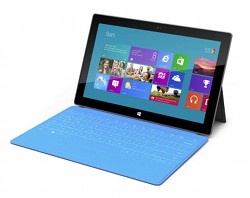 Microsoft revealed its new tablet computer, Surface, at a hyped-up media event in LA. Surface is a touch-screen tablet computer which Microsoft has designed and built itself. That's a real departure for a company which usually focuses on software.
Microsoft revealed its new tablet computer, Surface, at a hyped-up media event in LA. Surface is a touch-screen tablet computer which Microsoft has designed and built itself. That's a real departure for a company which usually focuses on software.
Surface will come in two flavours: one running a cut-down version of Microsoft Windows for mobile devices, the other running a full-blown version of Windows.
Initial reactions to Surface have been positive: the 11" device looks sleek and capable and has a retro rubber keyboard which doubles as a screen cover. But it won't be available for months, and as no details are available about battery life or price it's hard to judge it fairly.
Having said that, the next version of Windows is meant to be tablet friendly. If it really is (previous attempts have been less than impressive), Surface could be a real contender for business use, because you'll be able to run all your usual Windows apps.
Microsoft Surface is not yet available, and prices are still to be confirmed.
Google's Nexus 7
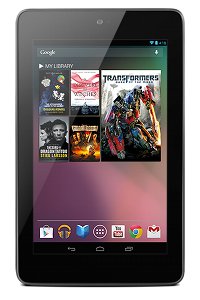 The other tech giant to jump on the tablet bandwagon this week was Google, which showed off its Nexus 7 tablet. With a smaller screen (7") and prices starting from £159, it's unlikely to be a direct competitor to Surface.
The other tech giant to jump on the tablet bandwagon this week was Google, which showed off its Nexus 7 tablet. With a smaller screen (7") and prices starting from £159, it's unlikely to be a direct competitor to Surface.
But this light and portable tablet may find business fans. At that sort of price, it's easy to envisage companies equipping sales and mobile staff with them as standard.
The most significant feature of the Nexus is its quad-core processor and 12-core graphics processing unit. In English, this means the Nexus 7 can crank up to run demanding apps. But at other times it can turn some of the cores off to extend battery life.
You can buy the Nexus 7 online from PC World Business, Currys, Comet, or direct from Google.
What's next for tablets?
These announcements show that it's an exciting time for tablet computing. If your company is thinking about investing in these new devices, your choice is increasing and stiff competition may drive prices down.
But Surface and Nexus also spell interesting times for business computing as a whole. Are tablet computers soon to become our mobile computing tool of choice? And if so, what does that mean for expensive, super-slim ultrabooks?
Other popular business tablets |
More popular content on tablets:
Mid-range business laptops reviewed
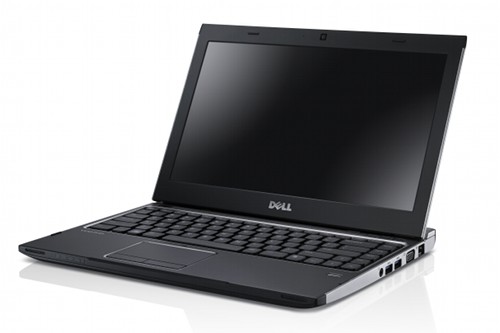
We’ve just published a bunch of laptop reviews on the IT Donut. But we’ve taken a slightly different approach to your average review site. Instead of getting our hands on each laptop ourselves, we’ve combed the web for trusted reviews, then distilled the information into a need-to-know review specifically aimed at smaller companies.
All the laptops we’ve looked at are capable enough to be your main computer, and small and light enough to carry with you regularly. Prices vary, but you’re looking at a minimum of about £500 for a usable specification. We’ve recommended which model to go for in each individual review.
So, if you’re in the market for a new laptop, here are the five we’ve looked at, and the sort of situations they’re good for:
Dell Vostro V131Price: From £359, but £500+ for a reasonable specification. In one sentence: A portable laptop that’s stylish and powerful enough to be your main laptop. Best for: Everyday computing in a sleek package that’ll be at home in any sales meeting. Buy now — Dell Vostro V131 |
Acer TravelMate TimelineXPrice: From £569 In one sentence:Decent performance wrapped in a dull, uninspiring design. Best for: Businesses willing to sacrifice some style and build quality in favour of value for money. Acer TravelMate TimelineX review >> Buy now — Acer TravelMate TimelineX |
HP ProBook 5330mPrice: From £665 In one sentence:Fine to use at your desk but battery life is very poor. Best for: Occasional travellers who don't need to worry about how long the battery lasts. Buy now — HP ProBook 5330m |
Lenovo X220Price: From £839 In one sentence:Super-solid build quality, excellent performance - but at a price. Best for: Regular travellers who have budget to spenf and want a laptop that'll withstand a few knocks. Buy now — Lenovo X220 |
Toshiba Portégé R830Price: From £1,139 In one sentence:Expensive, thin and light, with excellent performance - but only an average quality screen and a little overpriced. Best for: Anyone who wants a superbly portable laptop with built-in DVD drive and classy looks - and is happy to pay a little over the odds. Toshiba Portégé R830 review >> Buy now — Toshiba Portégé R830 |
Are you in the market for a new business laptop? What are the most important things on your shopping list?
Are you ready to discard your computers?
 If I told you that you’ll soon have no need for individual business computers, you’d probably think I was mad. But that’s what virtual desktops could do – and within the next year or two I think they’ll be commonplace in smaller businesses.
If I told you that you’ll soon have no need for individual business computers, you’d probably think I was mad. But that’s what virtual desktops could do – and within the next year or two I think they’ll be commonplace in smaller businesses.
Virtual-what? Ok, here’s how it works. At the moment, most businesses have a number of separate computers, each of which uses its own processing power to run programs and its own space to store files.
But with a virtual desktop system, all that processing power and storage space is centralised. Your computers are replaced with terminals. Little more than a screen, keyboard and mouse, they enable you to log in to a central server where your data is stored and your software run.
Virtual desktops look the same
From the user’s perspective, there’s very little different about using a virtual desktop. The system will remember your preferences, your programs, your icons and everything else. It looks and feels just like a normal computer.
The only difference is that instead of things happening on a box under your desk, they’re happening on a server. That server might be on your premises, but most businesses will find it makes more sense to log in to a virtual desktop system over the internet.
Virtual desktops: nothing new?
Virtual desktop systems have been touted for years, but until now they’ve mostly only been used by big companies for specific applications. For instance, the sales team of a big firm might use a virtual desktop system to access the customer database.
But cloud computing has become more accepted, internet connection speeds have grown and server technology has reached a point where it’s possible to run a number of virtual desktops from a single physical server. In short: using virtual desktops has become more convenient and practical.
Like other cloud computing services, virtual desktops store your company data outside of your business. As a result, the main perceived risk always seems to be around data security.
It’s almost like if people can’t see or touch their data then they think it isn’t somehow safe and secure. But that’s a fallacy: would you rather have your core business data on your premises, where it could be susceptible to fire, theft and flood, or stored on servers in a purpose-built data centre with round-the-clock security, strict access control – plus multiple internet connections and backup power supplies?
Actually, these precautions mean the question of security really boils down to whether you can trust your virtual desktop supplier with your data. To a large degree, that just means you taking the same security precautions as with any other cloud computing service.
Significant benefits
Virtual desktops offer some significant benefits for smaller companies. They’re flexible, cost-effective, and don’t involve the same level of capital expenditure as buying new computers.
Businesses are becoming more comfortable with the idea that they can use other IT suppliers to store and process data without losing control over it. As a result, over the next year or so I expect smaller companies to start trying virtual desktop systems in greater numbers.
Watch this space, because it could transform how you think about your business computers.
- Can the cloud make you more efficient?
- Beginner’s guide to the cloud
- Cut your costs with virtualisation
Will you have to upgrade to Windows 8?
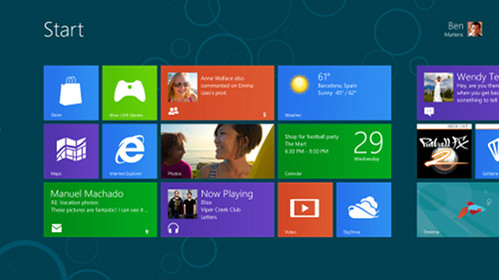
If you decide to use it, this is what Windows 8 will look like.
Windows 8. It’s the forthcoming new version of Microsoft’s overwhelmingly dominant operating system. Due for release in the autumn, it looks designed to bridge the differences between tablet and desktop computers. So, will it retain the features you’re used to, and what will it do for businesses?
If your business still uses Windows XP, Microsoft’s decade-old operating system (and still one of the best it’s ever created), you’ll need to pay special attention to Windows 8. That’s because Microsoft will stop offering security updates for Windows XP in April 2014, pretty much forcing you to upgrade to either Windows 7 or 8.
On the one hand, Windows 7 (the current version) is tried and tested. But Windows 8 is likely to last longer overall – and will offer new features that could benefit your business.
For starters, Windows 8 is aiming to be all things to all users. It aims to bridge the current gap between tablet and desktop computers. As an operating system, you’ll be able to run Windows 8 on a desktop computer, a laptop, a netbook, or a tablet.
Since it combines both a desktop and tablet functions, the question is whether they will all integrate and work together seamlessly. I’ve taken a look at a preview version of Windows 8, and these are the biggest changes I’ve seen so far:
- No more ‘Start’ button. Instead, you’ll be relying on the Windows Metro screen (pictured) which contains ‘tiles’ you can swipe and tap to launch applications.
- Your desktop isn’t so central. Instead of being at the heart of Windows, the desktop will be just another app that you can run from the Windows Metro screen.
- It’ll start faster. Finally, Windows 8 should put an end to those long, frustrating waits to get up and running at the start of the day.
- You’ll have some learning to do. The interface of Windows 8 is going to be substantially different to what’s gone before. Expect a steep learning curve.
- It’ll be good for touchscreens. The new interface is designed for touchscreens, so it should be easy to use by swiping, tapping, pinching and zooming the screen.
- It could be distracting. The home screen can contain newsfeeds, tweets, Facebook updates … all the things that you want to close down when you’re trying to focus.
However, one thing you can rely on is that you’ll still be able to use your favourite productivity tools like in-house software, spreadsheets, accounting software, word processors and graphics software. They should all run faster in Windows 8, too.
Kelly Smith has worked in the IT support industry in Kent for several years and has seen the constantly changing face of technology first hand and its effects on business. She currently works for Barton Technology.
Friday Donut tip: changing text capitalisation
This Friday's IT Donut tip gives you an easy way to ease the irritation that comes from hitting the caps lock key without realising it.
It's easy to accidentally tap the caps lock key when you're typing fast - perhaps focused on an important email or engrossed in a report. Before you know it you've ended up with A WHOLE PARAGRAPH OF UPPER-CASE TEXT. And unless you're trying to be rude by SHOUTING in an email, that's probably not what you wanted.
No need to panic. While you might be sighing in frustration at the prospect of deleting and re-typing it, there is an easier way. Just try one of these options:
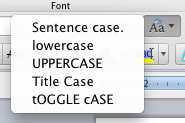 If you're using Microsoft Word (available as part of Microsoft Office or as a standalone package), there's an option to fix this. Highlight the text, then make sure the Home tab of your toolbar is selected. Look for the change case icon, which is an uppercase and lowercase 'a' next to each other (see image).
If you're using Microsoft Word (available as part of Microsoft Office or as a standalone package), there's an option to fix this. Highlight the text, then make sure the Home tab of your toolbar is selected. Look for the change case icon, which is an uppercase and lowercase 'a' next to each other (see image).
Click it and you'll see several options. Choose the appropriate one and the highlighted text will change.- No Microsoft Word handy? There is - of course - a website that can hep you out too. Just visit Convert Case, paste your text into the box, then click the relevant button. You can convert to all lowercase, uppercase, or a mixture.
- If you've typed the text into a website (perhaps you're leaving a comment on a blog), it's easy enough to fix too. You'll need to be using Firefox to browse the web. Just install the Case Changer add-on. Once you've done that, you can change the case of any text you enter just by right-clicking it.
Have you had any caps lock nightmares? Let us know how you get on with these tips.
Previous Friday Donut tips:
Coming soon: dodgy domains and useless URLs
 Good grief. The world of domain names looks like it’s about to become much more confusing.
Good grief. The world of domain names looks like it’s about to become much more confusing.
You might remember that about a year ago, ICANN (the organisation that manages domain names around the world) decided that we needed some new domain name extensions to go along with .com, .co.uk and the like. It wanted to pave the way for domain names ending in things like .microsoft, .google, .web or .anythingatall.
Sounds confusing? That’s because it is. There’s already a bewildering array of domain names available out there, from .co and .biz to .info and .xxx. You rarely see companies using them because most businesses realise that a .com or .co.uk is their best bet.
Sure, it’s irritating that professional domain name traders have bought up lots of the best addresses. In fact, you could argue that’s played a part in creating false demand for new domain extensions.
But no matter. It’s happening. New domain extensions are coming soon. There have been over 1,900 applications for the things, mainly driven by big businesses who see a branding opportunity (.amazon, anyone?) and investors who see an opportunity to profit.
The full list of possible new extensions was released recently. Here are a few that caught my eye:
- .bbc. Our world-renowned British Broadcasting Corporation has applied for this one. After all, bbc.co.uk is such a tricky address to recall and type in a hurry.
- .porn, .sex, .sexy and .adult. Oh come on, it is the internet – you must have been expecting some adult-themed domains. But wasn’t .xxx supposed to be the definitive adult domain name?
- .cymru, .wales and .scot. If you run a business in Wales or Scotland, would one of these domains interest you? There are no domains proposed for England or Northern Ireland, as far as I can see.
- .rip and .vip. Two interesting target markets: dead people and people who think they’re more important than the rest of us. I can’t see us bothering with itdonut.rip, if I’m honest.
- .app. As mobile apps have become the thing in the last couple of years, is it any surprise that 13 different bidders are vying to run this domain extension? (Perhaps surprisingly, Apple doesn’t appear to be one of them.)
- .bentley, .boots, .guardian, .sky and .nextdirect. These are just some of the big UK brands which have decided they want to take a punt on their own domain extension. But is .nextdirect really any better than next.co.uk?
If you can be bothered then you too can review the whole list of proposed domains. Make sure you look out for my personal favourite: .transformers, which Hasbro has proposed. In fact, that’s maybe the only worthwhile one of the lot.
Shopping around for a new domain name?
Or looking for a web hosting company? You can buy domains and web hosting from: 123-reg; Daily Hosting; NamesCo; Easily; 1and1; JustHost; Heart Internet; Strato Hosting; eUK Host; UK2.net.
More content on domain names:
Contactless payment infographic
Infographic supplied by Craig Murray, content c/o Caxtonfx.com
Friday Donut tip: four easy ways to stay focused while you work

Do you use your time wisely? (Image: comedy_nose on Flickr)
This Friday's IT tip isn't a great shortcut or an essential way to stay secure. It consists of four simple ways to deal with all those distracting time-sinks that your computer makes so readily available.
With new emails arriving frequently, tweets piling up, Facebook updates, instant messages and more, it can be hard to stay focused on the task at hand. You might kid yourself that by constantly jumping between different windows you're multitasking, but actually you're probably just being inefficient. Here are four strategies to help you cope:
- Go full-screen. Many bits of software - including Microsoft Word and most web browsers - have a full-screen mode, which hides everything else on your computer. If you find yourself constantly refreshing your Twitter feed, going full-screen helps you to stay with the job at hand.
- Record how your spend your time. The excellent RescueTime is a service that monitors exactly how you spend time on your computer. It'll show you how much time you waste on Twitter, or spend looking at distracting websites. And how much you spend on real work. Its results can really shame you into action!
- Keep a clean desktop. As I type this, my computer's desktop is a mess of windows. I have ten web browser tabs open in two windows, several documents in the background and some other bits and pieces. Each is a potential distraction. So don't do what I do: get into the habit of closing everything you don't need.
- Turn off new email notifications. If you're using Microsoft Outlook, its default setting is to pop up a little message every single time you get a new email. It's easy enough to switch these off, or you can just close Outlook altogether when you need to concentrate on something.
Does your productivity fall as you open more windows on your computer? How do you avoid distractions and stay focused on what's really important? Leave a comment and let us know.
Previous Friday Donut tips:
Cloud computing: there's nothing new under the sun
 There’s nothing much new about cloud computing. In fact, it’s basically old-fashioned technology that’s over 25 years old. It’s been rebranded and respun and now gets pumped out in various different guises.
There’s nothing much new about cloud computing. In fact, it’s basically old-fashioned technology that’s over 25 years old. It’s been rebranded and respun and now gets pumped out in various different guises.
When you look at larger companies – like banks and other financial institutions – you can see they’ve been using server-based computing (which is essentially the same thing as cloud computing) for decades. For instance, for years now banks have given their users dumb terminals – little more than a screen, keyboard and mouse – which connect to a central server where all the actual data processing is done.
Big business has used the cloud for years
This server-based computing comes into its own when security, disaster recovery and business continuity are paramount.
In this kind of big-company IT setup, you’ll find computers heavily locked down. Users can’t install their own software. They get access to basic email, which is usually just about sufficient for their needs. Systems are designed and support is provided by the IT team within the company.
This approach leads to a stable, secure and hassle-free IT solution. The phone in the IT support department hardly rings, because there’s not a lot that can go wrong. (Actually, big businesses generally favour ultimate reliability over offering more flexibility to users, because too many support calls are likely to means questions are asked of the IT team.)
The cloud, act two
So, roll on round to around 2006, when a few young, wise IT experts left big businesses. They’d rolled out systems for banks or insurance companies and they saw an opportunity doing the same thing for smaller companies.
Thus was born the early stages of what we now call cloud computing.
Today, the best cloud services are underpinned by the same principles that created those big company IT systems. They generate hardly any IT support calls, because they generate hardly any problems.
The only real difference is that the server hardware is owned by a trusted cloud computing company. They’re the experts who take care of backing everything up to a separate location and monitoring things to make sure users get the best experience in terms of features and functionality.
Users of the service can log in to use software and access their data and applications from anywhere, at any time. Cloud computing: it’s nothing new, but it is very powerful.
- Beginner’s guide to the cloud
- Cloud computing services to get you started
- Can the cloud make you more efficient?
Terry Shepherd is a cloud consultant at Cirrus Stratus.
Two alternative ways to do tablet computing
It’s interesting to see how tablet computer manufacturers have lined up behind the indisputable industry leader, Apple. In some ways it feels like the iPad doesn’t have many head-on competitors.
Some tablet makers have tried to be a bit canny. Knowing Apple products aren’t cheap, they’ve aimed towards the budget end of the market – offering a tablet experience without the iPad’s price. Others have changed or added features – for instance, by making the display much smaller, including a detachable keyboard or adding an extra screen.
We’ve tested two tablets recently. The first is the Archos 101 G9. Available for a little over £200, this is a 10” tablet for the cost-conscious that fits squarely into the first category. The second we tried is the Fujitsu Stylistic Q550. At around £700 it ain’t cheap, but it’s one of the few tablets you’ll find running the full version of Windows 7.
Archos 101 G9: cheap but capable
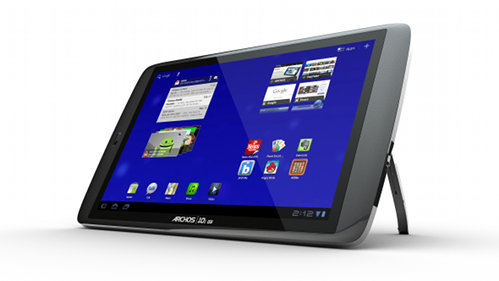
The Archos 101 G9 is no iPad in looks or build quality. It’s made of fairly flimsy plastic and feels cheap. But when you’re paying half the price of an iPad, you have to tolerate the odd compromise. And although it might be plasticky, the Archos case has some nice touches.
The screen is responsive to touches and swipes, there’s a built in slot to add an optional 3G data card (to get online via a mobile phone network), and the convenient fold-out stand props the tablet up at the right angle to read or watch. It sounds like a small thing but it makes a real difference to this tablet’s usefulness.
Sure, the charging cable is far too short (would it have killed them to make it just a bit longer?), but the battery lasts well and the screen is fairly crisp, if lacking in contrast. Maybe most importantly, this tablet has reasonable power. With a proper dual-core processor, it runs the latest version of Google’s Android operating system, allowing you to access loads of different apps and they’ll run at a decent speed.
We did run into some quirks with the standard web browser. Tapping links didn’t always seem to register first time and there were a few stutters and judders that might put you off if you’re used to a smooth iPad.
In all, this is a capable tablet for the money. Although its features are geared more towards home than business users (Archos bill it as an ‘amazing multimedia’ machine for photos, videos and music), there’s no reason you can't use it for email, documents and more.
Fujitsu Stylistic Q550
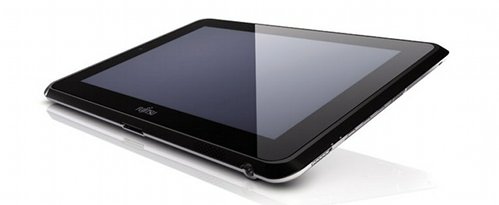
Not to be confused with this Philadelphia soul group, and quite in contrast to the Archos, the Stylistic Q550 feels really solid. Fujitsu is clear that this tablet is for business users and has included a full-blown version of Windows 7, enabling you to run the exact same software as on any other Windows PC. That means no cut-down apps and no nightmares trying to view websites in an awkward mobile browser.
It also means the Fujitsu should easily integrate into your existing network without compromising security or compatibility. Further boosting its security credentials is built-in encryption and a fingerprint reader, although we’ve yet to come across anyone who actually uses the latter.
Other notable features include excellent connectivity (there’s USB, HDMI for an external display, an SD memory card slot and more), front and back cameras and a stylus, which is basically a pen you can ‘write’ on the bright, crisp screen with. This is attached to the tablet by a cord, but frustratingly there’s nowhere to tuck it when you’re not using it. It also requires an oddly-sized AAAA battery (no, that’s not a typo).
The stylus adds an interesting dimension. It’s fantastically helpful if you’re doing jobs that require pinpoint accuracy, like editing photos. But in other circumstances it doesn’t offer many advantages over your fingers. We can see how it’ll serve a niche market well. But for most people, the stylus will be superfluous.
More useful is wireless USB. Not yet available on many tablets, it lets you connect to compatible devices wirelessly. It’s ideal for giving presentations without having to plug anything in.
This tablet takes a while to start up but once it’s going performance is reasonable, especially as you’re running demanding Windows software. Strangely, there’s no sensor to rotate the display, so Fujitsu has included a button to do this manually. There’s also a button for classic Windows key combination ‘CTRL-ALT-DEL’, which hardly inspires confidence in the operating system’s stability.
Value for money trumps unnecessary features
It’s true these two tablets aren’t direct competitors, but while we warmed to the Archos for its excellent value for money, we found the Fujitsu harder to like. If you’re looking for a really portable Windows computer, you could add a dock, keyboard and display and it might do nicely. But as a tablet, it’s flawed: unless you really need the stylus or strong security tools, you’d be better off with an iPad.
Where to buy tablet computers |
More content on tablets:
Friday Donut tip: securing LinkedIn passwords
This week, online services LinkedIn, eHarmony and Last.fm all suffered security breaches which saw users' passwords fall into the hands of hackers. It's not the first time something like this has happened and it won't be the last: previous victims have included Gawker and Twitter.
I've mentioned before that I think passwords are broken. But they're here to stay, at least for the foreseeable future. So for this Friday's Donut tip, we explain what you should do if you have an account with one of the affected services.
Secure your account
To begin with, be wary of any emails you receive warning that your password has been leaked. They might be genuine, but there are lots of phishing attempts going round too, so you're better off just deleting them.
The next step is easy: PANIC!
Actually, I'm just joking. You definitely don't need to panic. It's counterproductive and unnecessary, because it's actually pretty easy to secure your accounts:
- Go to the website of the service you use (LinkedIn, eHarmony or Last.fm)
- Log in using your normal username and password
- Use the change password option to make your password something completely new
(Don't just change a single letter or number of your old password - use something totally different. At this stage it's a good idea to make sure your password is nice and strong. I've put some tips below)
That's it, unless - like most people - you use the same or a similar password for other things. You see, scammers aren't stupid, and they know that if you use that password for your LinkedIn account, perhaps you also use it - or something similar - for more important services, like your email.
This means you also need to change any identical or similar passwords that you use on other services. You should really have a different password for each one.
Creating strong passwords
You've probably seen the usual advice about creating strong passwords. Use upper and lowercase letters, numbers and symbols, don't use words you'd find in the dictionary, and so on. But these passwords can be devilishly hard to remember.
I like the song lyrics trick: take a memorable line from a song, pull out the first letters of each word, then wrap it in a number that you can remember.
For instance, a Rolling Stones fan might choose the first line from Sympathy for the Devil: 'Please allow me to introduce myself'. And he might be able to remember 1960, because that's the year he was born.
Shortened, it becomes 19Pamtim60. Not bad.
Alternatively, you can use a tool like LastPass to generate and remember super-strong passwords for you. John Sollars talked more about keeping passwords safe in a recent post over on Startup Donut.
Previous Friday Donut tips:
Can you trust your IT supplier?
 If you were to list all your company’s suppliers in order of importance to the success of your business, there’s a good chance your IT supplier would be near the top. With IT playing a part in virtually every aspect of most companies, you need an IT supplier you know will be there when you need them. So, how do you find that key business partner?
If you were to list all your company’s suppliers in order of importance to the success of your business, there’s a good chance your IT supplier would be near the top. With IT playing a part in virtually every aspect of most companies, you need an IT supplier you know will be there when you need them. So, how do you find that key business partner?
In my opinion, IT services are purchased on the basis of trust. Sure, there are lots of other factors involved, but for smaller businesses the relationship is often between an IT professional and the company’s owner-manager. Establishing trust in that relationship is crucial.
I have held this view for a while and it often crops up when I am speaking to owner-managers about IT security, staff access or other sensitive matters. I’m often involved in conversations where the owner-manager is keen to ensure that staff can’t access ‘x’ or are limited in their viewing of ‘y’.
The only way a business owner will feel reassured in that sort of conversation is if they trust me as their IT supplier.
Your IT supplier can access everything
But the one thing that’s never discussed is that we have access to absolutely everything. Not just a company’s server, but all its data, all its email (past and present), every single document and probably a lot of the company’s financial data too.
Like all responsible IT suppliers, we take this very seriously. And like every responsible IT supplier, we have processes in place to ensure that access to clients’ data is strictly monitored.
Trusting advice from your IT supplier
Trust is also a factor in the advice you get from an IT professional. It’s not unusual for businesses to come to use with a very general description of a problem:
“We can’t put our finger on anything specific, but we just get the feeling that something is not quite right...“
That’s a very broad statement and really difficult to isolate in terms of IT needs. But what that client often means is that they feel they’ve lost trust with their current IT provider. And once you’ve lost it, it’s almost impossible to get back.
In summary, ask some important questions of your IT provider to establish trust right at the start of your relationship. How long have they traded? Can they provide references? Can you talk to one of their existing clients?
Because for your business to have reliable IT systems that you can place trust in, you also need to place trust in your IT supplier – from day one.
- What to ask when choosing an IT support company
- Find an IT supplier for your business
- Get the right IT supplier contract
Craig Sharp is MD of Abussi.
Friday Donut tip: selectively delete cookies
 When you’re making changes to your website, generally browsing, or are having trouble with something stuck in your shopping cart – there’ll come a time when you want to delete some cookies. You can delete your entire history, which will also delete all of your cookies – but sometimes you might want to be a bit more selective about what you delete.
When you’re making changes to your website, generally browsing, or are having trouble with something stuck in your shopping cart – there’ll come a time when you want to delete some cookies. You can delete your entire history, which will also delete all of your cookies – but sometimes you might want to be a bit more selective about what you delete.
Here we cover how to do just that in the top 3 browsers:
Chrome
Click the spanner icon in the top right
Click ‘settings’
Click ‘Show advanced settings’ (at the bottom)
Click ‘Content settings’
Click ‘All cookies and site data’
Search for the domain name of the website in the top right
Click the X alongside each cookie you want to remove
Firefox
Click ‘Tools’ then ‘Options’
Select ‘Privacy’ along the top
Select ‘Remove individual cookies’
Search for the domain of the website
Select a cookie and click ‘Remove cookie’
Internet Explorer
Click ‘Tools’ then ‘Internet options’
Click ‘Settings’ under ‘Browsing history’ on the ‘General’ tab
Click ‘View files’ under ‘Temporary internet files’
Using the standard Windows search feature, search for the domain of the website
Select the cookies you want to remove and press delete on your keyboard (or right click and select delete)
You’ll need to refresh the page in all of these browsers in order to see any changes having removed the cookie.
Bonus joke: A website asked me if I minded if they store some cookies on my machine. I said that I do. They then asked if I wanted them to remember that preference – which would involve storing a cookie on my machine. Tough one.




